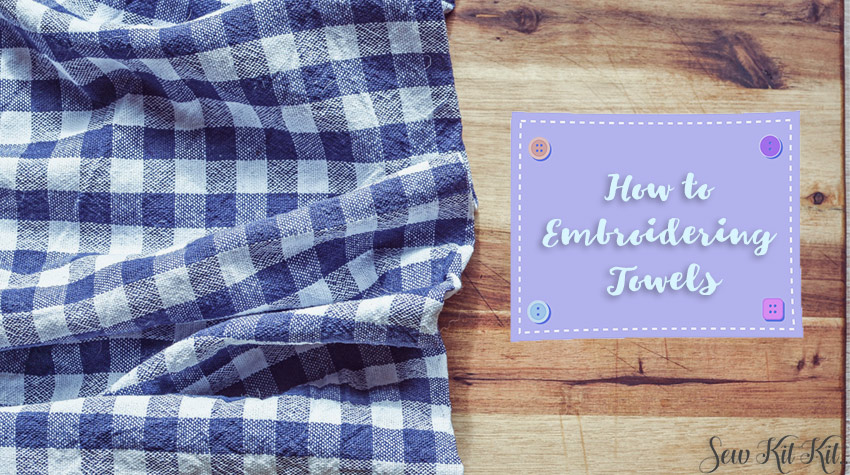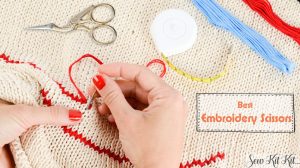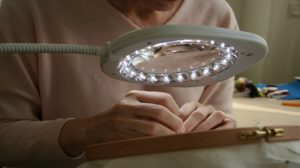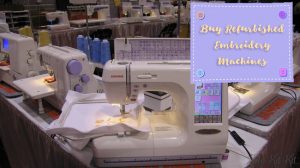Last Updated on March 29, 2021
Embroidery on terry cloth isn’t that hard to do. That may seem surprising since it is heavily textured, has two distinct sides, and produces a lot of lint that can lead to mechanical problems.
However, the consistently demanding nature of terry cloth is exactly what makes sewing it simple. Getting clean-looking designs on towels is just a matter of employing certain basic techniques during the design stage and in the production area.

Table of Contents
Before You Sew
Before the actual embroidery begins, your essential first step lies in taking the actual order from your customer. A towel’s wide-open field provides lots of canvas for creativity, but it also leaves room for misunderstanding. Seasoned towel embroiderers suggest triple-checking your customer’s preferences for design placement and size.
For instance, you must determine which side of the towel will feature a logo, the front or back. (The “back” of a towel usually has a tag in one corner.) On a velour towel, the design is typically placed on the smooth, velvety side rather than the looped terry side. Still, it’s a good idea to ask.
Occasionally, you may get a request to sew on the loop side, but the majority of jobs will certainly be on the velour side because it has a more finished look.
Always confirm the placement of the design, because there are so many options, and much of it is personal taste.
It might be a good idea to have customers fill out a small order form that includes a drawing of the towel to indicate the placement of any design, tag, grommet, fringe, or other distinguishing details. The rule of thumb is that a design runs diagonally on the opposite side of the tag, but it is a good idea to ask the customer every time.
Although experience tells him that monograms should be located on the front and opposite end of the towel from the tag, keep in mind that there really is no industry standard.
Determining the design’s distance from the edge is critical. Some towels have a recessed border woven into the terry cloth. As you verify placement on those styles, find out whether the customer wants you to measure from the actual hem or from the edge of that recessed border.
The More You Know
Knowledge is an important element for embroidered towels, for both the customer and the decorator. The embroiderer must know how the customer will use and maintain the towels. For example, standard 40-weight rayon thread may suffice for towels unless they’ll be heavily laundered, as in the case of hotel linens. In that case, a polyester or cotton/poly thread that resists fading and bleeding may be a better choice for the job.
Rayon thread tends to be easy on machines and comes in more colors. Dyes have become more stable in the last two or three years. Rayon thread now lasts through many more heavy items of washing and wear and tear than it used to.
Topping
Once the order’s parameters are confirmed, the embroidery process begins with the first line of defense against terry cloth’s rugged texture: digitizing. Be sure to mention to your digitizer that you will be working with terry cloth. There are specific techniques used to optimize embroidery on the material. This will save you potential headaches once you get the towels on your machine.
Extra underlay is recommended almost anytime you are working with terry cloth. On certain designs, you may actually want the material to show through for a unique look. However, the norm is considerably more underlay and moderate to heavy topstitching.
You should use the same top densities as on shirts and caps. You should tend to sew from the center out on terry to keep from bunching the material and causing pleats.
The next step is an application of a water-soluble topping to smooth out the surface for the needles. Which topping you choose really depends on the design’s size. The larger the design, the more crucial it is to use water-soluble topping rather than a plastic-type substitute.
Finally, although the back of the towel is exposed, it is still a good idea to use a backing – either a light cutaway or tearaway. I recommend a light cutaway, closely trimming it to minimize detection. You use a lot of stitches on a towel. It must have stability during embroidery and keep its shape through a lot of washings.
What else to keep in mind
- Check the bobbin case and hook assembly for lint buildup after every few runs. Use canned air to clear pockets of lint. Slide the edge of a business card through the bobbin casing to clean it.
- Know the variables in different towel “finishes” such as terry loop vs. terry velour. Loops create a bit higher pile than velour, where the loops have been shaved down.
- Shorter and thinner letters are more likely to sink into the pile, but columns wider than 6 mm are more easily snagged during use. A solution is to sew a fill stitch base using the same color thread as the towel, allowing you to sew on top of this smooth surface without greatly widening the columns.
- Remember that soluble topping washes away, leaving the terry to move about and push up through the stitches. Double up on the underlay to create a permanent holding effect in addition to the topping.
- On a dark towel, try using a white tearaway as a topping under a solid white fill stitch area of the design.
- Column widths of lettering should be increased by 10%, especially on basic keyboard letters.
- Determine whether density should be set normally or raised slightly (no more than 20% in most cases).

![Read more about the article How to Separate an Embroidery Floss [Guide]](https://www.sewkitkit.com/wp-content/uploads/2019/07/How-to-Separate-an-Embroidery-Floss-7-300x168.jpg)

![Read more about the article How to Embroider Stretchy Material [Guide]](https://www.sewkitkit.com/wp-content/uploads/2018/05/How-to-Embroider-Stretchy-Material-300x168.jpg)

![Read more about the article Embroidery VS Screen Printing – Which is Better? [2023 Guide]](https://www.sewkitkit.com/wp-content/uploads/2018/05/Embroidery-Versus-Screen-Printing-300x168.jpg)
